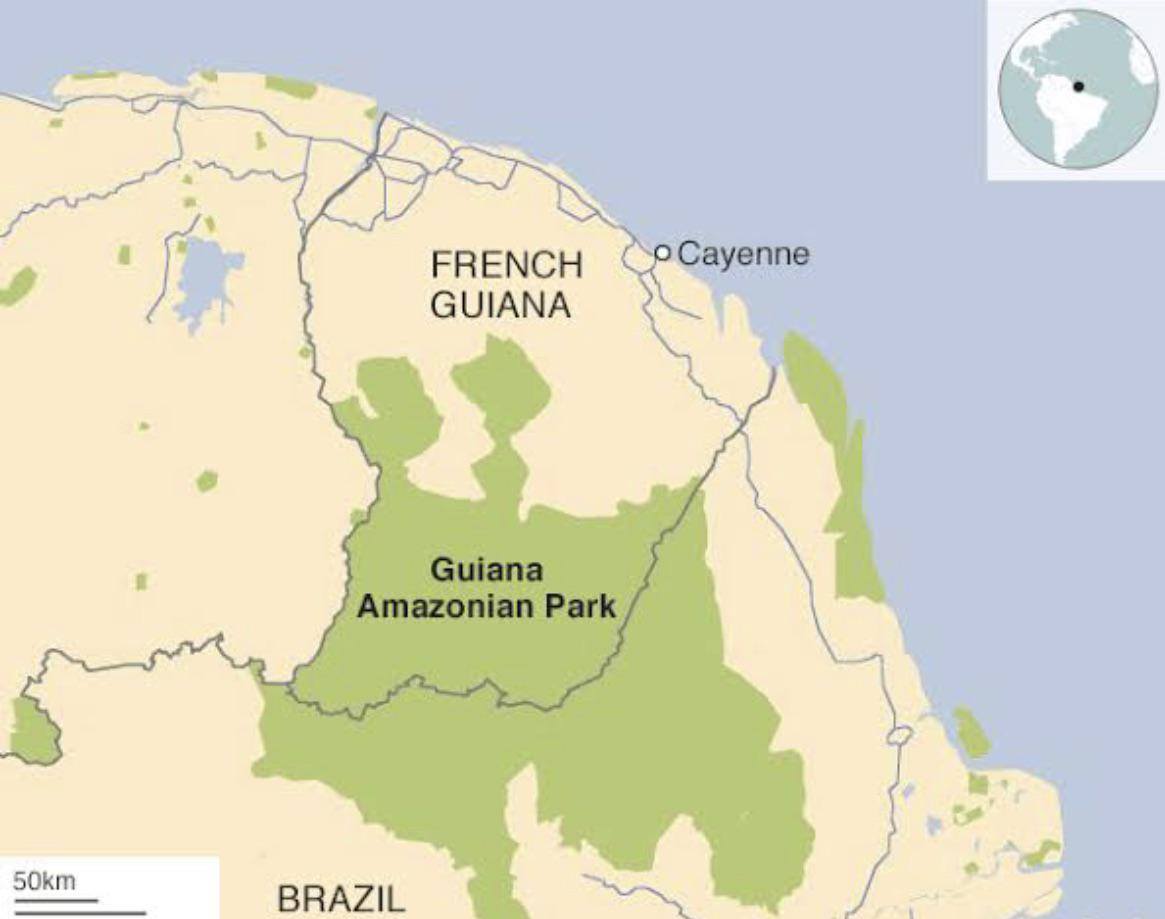Map by Google/BBC
When you think of the European Union, you probably picture cobblestone streets, ancient cathedrals, and perhaps the Alps. The Amazon rainforest? Not so much.
Yet here’s a geographical quirk that’ll make you do a double-take: the EU’s largest national park isn’t anywhere near Europe. It’s deep in the South American jungle.
Welcome to Guiana Amazonian Park!
Established in 2007, Guiana Amazonian Park sprawls across 34,000 square kilometers of pristine rainforest in French Guiana. To put that in perspective, it’s roughly the size of Belgium.
The park covers about 40% of French Guiana’s total land area, making it not just the EU’s largest national park but one of the most significant protected areas in the world.
French Guiana is an overseas department of France, which means it’s as much a part of the EU as Paris or Marseille. Residents carry French passports, use euros, and vote in European elections.
So technically, the EU stretches all the way to the edge of the Brazilian rainforest.
More Than Just Trees
This isn’t your average nature reserve. The park protects an incredible diversity of life, including jaguars, giant otters, harpy eagles, and over 1,500 species of plants. Eight species of primates swing through the canopy, and the rivers teem with exotic fish and caiman.
But the Guiana Amazonian Park is also home to indigenous communities who have lived in harmony with the forest for thousands of years.
Several Amerindian groups, including the Wayãpi and Teko peoples, maintain their traditional ways of life within the park’s boundaries. Their knowledge of the ecosystem is invaluable for conservation efforts.
A Conservation Success Story
The park represents an ambitious approach to conservation that balances environmental protection with cultural preservation. Unlike many protected areas that exclude human inhabitants, this park embraces the relationship between indigenous communities and their ancestral lands.
Getting there isn’t easy, which has helped keep the ecosystem largely intact. There are no roads into the heart of the park. Visitors must travel by boat or small aircraft, and tourism is carefully managed to minimize environmental impact.
Why This Matters
In an era of accelerating deforestation and biodiversity loss, Guiana Amazonian Park stands as proof that meaningful conservation is possible. It shows how political boundaries can work in nature’s favor. The park benefits from EU funding and environmental regulations while protecting a crucial portion of the Amazon basin.
Next time someone tells you they’re visiting an EU national park, don’t automatically assume they mean the Black Forest or the Scottish Highlands. They just might be heading to the Amazon.
Help us out by sharing this map:
